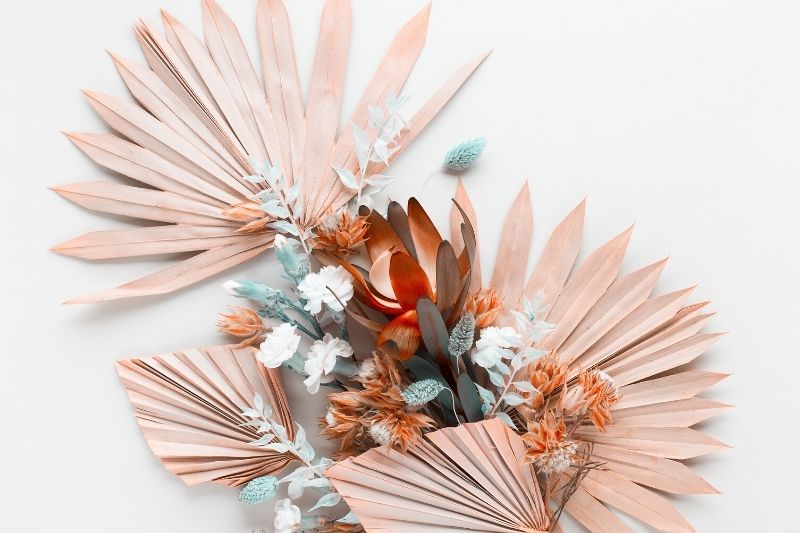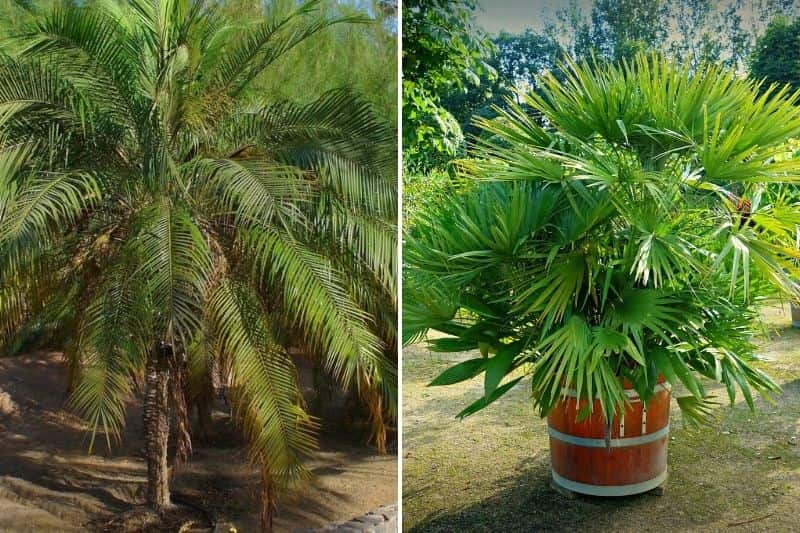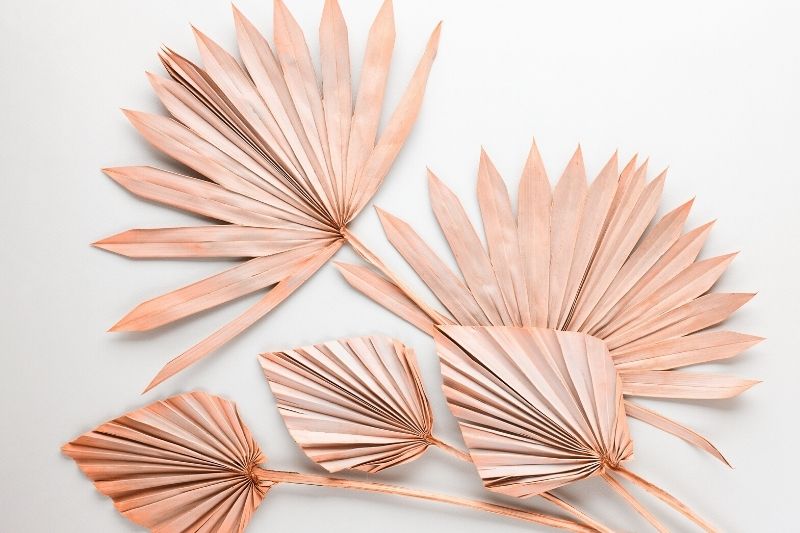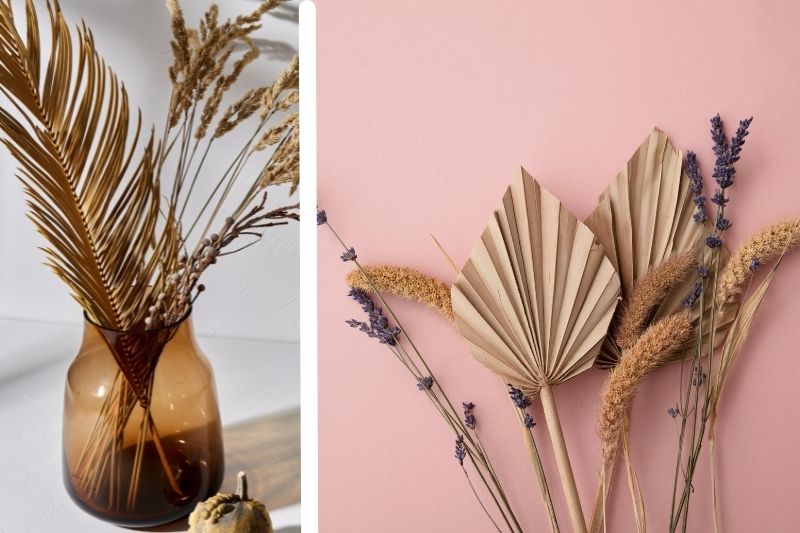Very on-trend, dried flowers and leaves are fashionable for decorating and enhancing our interiors. If you stroll down aisles of homeware shops, you will no doubt have noticed: the trend is for natural materials! Raffia, rattan furniture, linen and other natural materials are finding their place in our homes to add botanical touches. Why not take inspiration from this to create a nature-inspired decoration with dried palm leaves? Besides beautifying interiors, this also clears away old fronds from your palm to give it a neat trim. Discover our tips and technique for drying a palm leaf.

Palm leaves are stunning for creating a natural, floral decoration
When to harvest palm leaves?
Palms are pruned at the end of autumn and during winter, between November and March. At that time, palm pests are dormant and cannot take advantage of the operation. Note that this pruning is purely aesthetic and is neither obligatory nor necessary.
Which palm varieties to choose?
Different palm varieties are distinguished by the shape of their leaves. For example, some are palmate and fan-shaped as seen in Chamaerops, Trachycarpus and Washingtonia. But foliage can also be pinnate, like a long, elegant feather in Butia capitata, Phoenix and Jubaea chilensis. Also choose a variety suited to your climate and level of sunlight.
→ To choose a suitable variety, discover our article: which palm should I choose for my garden?

Phoenix roebelinii has pinnate, feather-shaped foliage, while Chamaerops humilis is palmate like a fan
How to harvest palm leaves?
Necessary equipment :
- pruning shear or a pruning saw. Remember to disinfect tools before use to avoid transmitting disease between plants
- pair of gloves. Some palm leaves carry spines that can cause severe itching or even allergic reactions
- wound-sealing putty
Steps :
1) Select dry palm leaves on the tree or those beginning to dry. If none are available, identify the oldest, usually trailing, leaves. They may be spotted and ageing. Never cut leaves from the crown of the palm.
2) Using pruning shear, cut the petiole at the base of the leaf.
3) Apply wound-sealing putty to the cut.
Note: avoid excessively severe pruning of your palm, so as not to weaken it or make it more sensitive to cold.
How to dry palm leaves?
- You can dry palm leaves simply by placing them in a vase, without water, indoors. This method is the easiest and allows immediate decoration of interiors.
- If you want very flat fronds, for example to make a panel or place under glass, lay the leaf on a flat surface in a dry, heated room. Cover the leaf with a heavy, flat object such as a book. After about two weeks, the leaf will have dried and taken the desired shape. If not, repeat the process for an additional week.
Tip : green leaves will retain a slight greenish tint, like hay, if dried away from light. To obtain a golden, wheat-like hue, dry fronds in full sun.
What to do with palm leaves?
Fan-shaped palm leaves can be trimmed simply with scissors once dry. You can then shape them into rounded or pointed forms, as seen in homeware shops. Some decorators even paint them gold for a very chic, contemporary effect.

Palm leaves can be recut into rounded or pointed shapes
Palm leaves naturally fit into a vase, alongside plumes of pampas grass, hare's-tail (Lagurus ovatus) or Pennisetum. Create a pretty bouquet by adding a few dried flowers such as hydrangea, strawflower, statice, and don't forget gypsophila for lightness. A few thistles, eryngium and teasel will add a bit of bite and character to the arrangement. For roundness, include stems of flax or honesty when seedy, and a few sprigs of dried eucalyptus.

You can also create superb wall decorations with loose palm leaves, under glass or in a frame.
Palm leaves are also used woven to make decorative items, baskets, hats and many other objects.
Further reading :
- See all our palm varieties.
- Discover our full fact sheet on palms: planting, to grow and to maintain.
































Comments